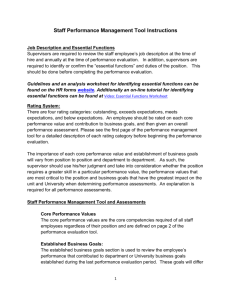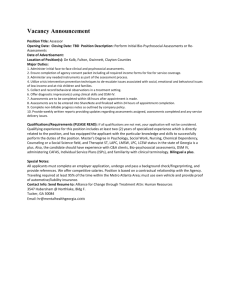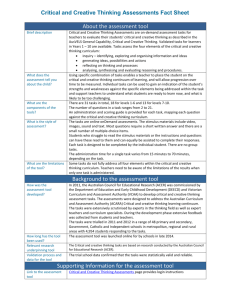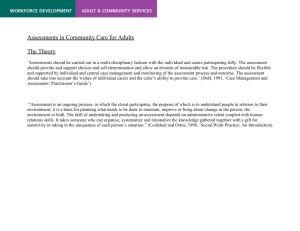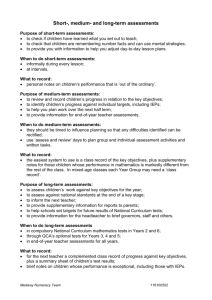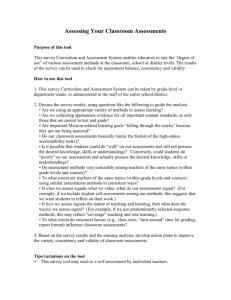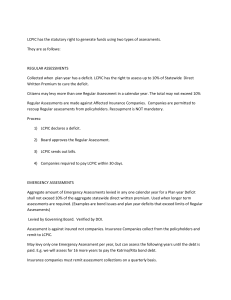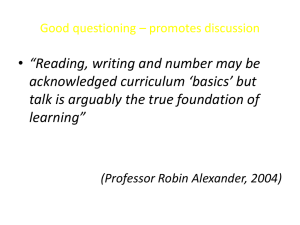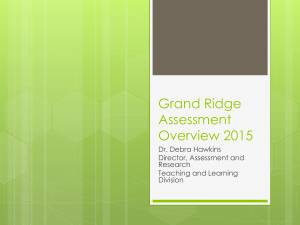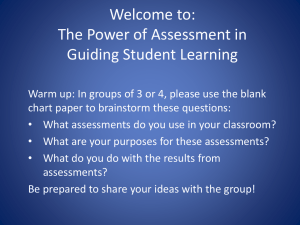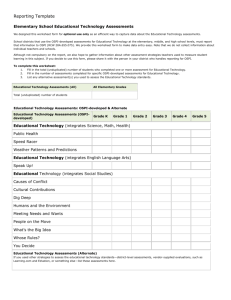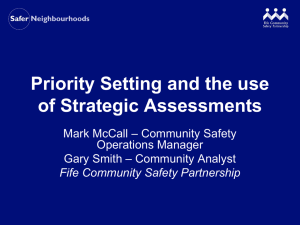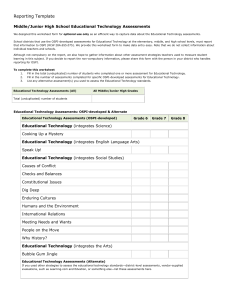Assessing Employee Performance
advertisement
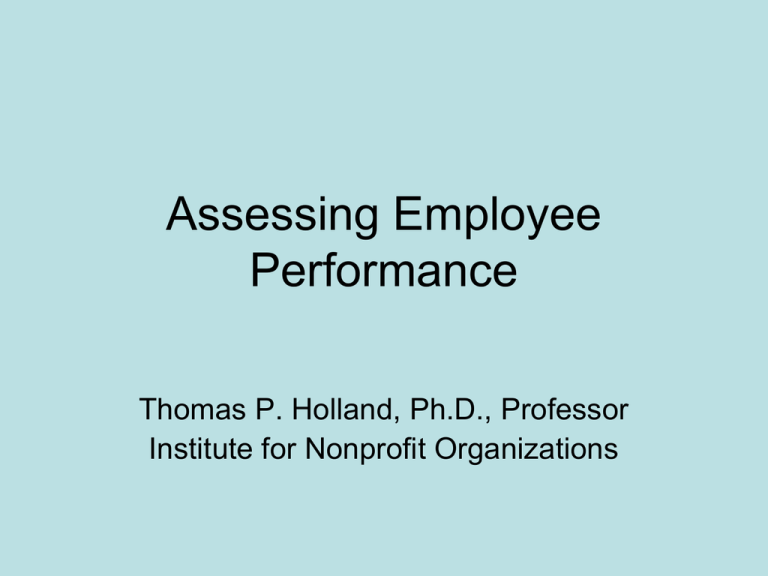
Assessing Employee Performance Thomas P. Holland, Ph.D., Professor Institute for Nonprofit Organizations Performance Appraisal • Opportunity for worker and supervisor to discuss the individual’s work, review past performance, and identify goals for future improvement • Can be done punitively, constructively, superficially • Should be based on job description and explicit expectations of role, observed performance and not personality or rumor; what you see and what you want to see instead. • Should be scheduled regularly (formal) and take place casually at times between • Should result in mutually acceptable plan for improving performance in coming time period Key Components of Assessments • Measurement: performance should be evaluated against mutually understood targets and objectives • Feedback: provision of information to individual about performance, achievements, needed improvements • Exchange of views: truthful, two-way conversation about what has happened, explanations for performance, ideas about changes • Positive reinforcement: emphasize what has been done well and make constructive criticism about what should be improved • Agreement: joint understanding of goals, what needs to be done to improve performance and how it should be undertaken • Record: conclusions should be documented on forms and/or narrative and included in personnel file, with copy to individual. Appraisal Skills • Asking good questions – How do you feel about how your work has been going? – How do you see the job developing? – What do you think happened and why? • Listening, paying careful attention to speaker, avoiding interruptions and generalizations – Could you tell me more about that? – Let me check my impression. Do you mean that….? • Giving feedback, based on facts and evidence, building on skills, promoting understanding of what changes are important and why, emphasis on future successes Examples of Assessment Approaches and Tools • Microsoft Office has Employee Performance Review Form • AFSCME Employee Performance Review Form.doc • www.k-state.edu/hr/forms/reviewforms.html • www.successfactors.com • www.socrates.com/Newsletter0105_Performanc e.asp • www.2020software.com/search/Employee_Annu al_Review_Form • Search web for additional examples 360 Assessments • Provides performance feedback to individual from several sources • Uses questionnaire composed of statements about quality of person’s work, including all relevant components • Individual plus several others fill out questionnaire independently • Others’ responses averaged, kept anonymous • Averages of others’ assessments and person’s own assessments compared • Identify aspects of person’s performance that – both agree done well (good news you expected) – both agree not done well (bad news you expected) – other’s ratings higher than person’s own (good news you didn’t expect) – others’ ratings lower than person’s own (bad news you didn’t expect) More on 360 Assessments • Challenges person’s views of self and work, differences between self-perceptions and those of others • Useful to identify specific areas needing improvement, leading to learning contract with supervisor • May be repeated to assess changes • Items must be short and clear, relevant to person’s role • Useful to have larger numbers of others knowing person’s work doing ratings • Anonymity of raters essential, only averages reported • Opportunities for comments can be provide useful information Using Assessments in Coaching, Mentoring, and Training • Identify specific competencies needing improvement • Formulate goals for attainment • Specify appropriate methods for addressing them, set tasks and timeframe • Implement development activities • Monitor movement, make use of feedback to refine efforts • Continue practicing through work assignments
